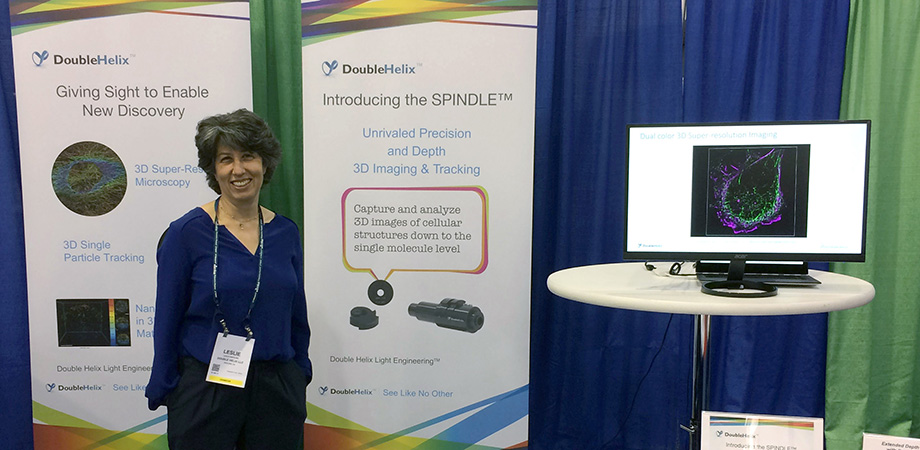A Day in the Life of an SPIE Professional: Leslie Kimerling
In 2019, the #FacesofPhotonics series in SPIE Professional will focus on people who have taken different career paths in optics and photonics, from industry, to starting a new company, to academia, to government. These profiles will give SPIE Members a glimpse at a day in the life of an SPIE Professional.

Leslie Kimerling has spent much of her career working with early stage and growth companies. In fact, she describes herself as a "serial entrepreneur." She has worked with founders who have a passion for their invention, but without a clear idea about how to commercialize it. That's where Kimerling comes in: she knows how to take an invention and figure out where it fits in the marketplace and build a company around it.
"What's most interesting is when there's an amorphous idea that's potentially very powerful, and turning it into something that's tangible and usable by more than a few-it's really a fun process for me," says Kimerling.
Most recently, Kimerling has partnered with Dr. Rafael Piestun to cofound Double Helix Optics (doublehelixoptics.com), a company that develops products that create vivid 3D nanoscale images, allowing you to see structures down to the single molecule level. Double Helix won the 2016 SPIE Startup Challenge and the $1 million top prize in the Luminate accelerator program and competition in Rochester, New York in July 2018.
Why did you decide to launch Double Helix Optics?
My cofounder, Dr. Piestun, was a friend in Boulder, Colorado, and he was talking to me about an innovation that he thought had significant market potential. But, he didn't come from a business background, and he wasn't sure how to bring technology to the marketplace. We spent a good chunk of time sitting together in the coffee shop, walking through what it would take to turn the double helix 3D imaging technology from concept to a usable product with potential commercial opportunity. After working together for about nine months, we decided to launch Double Helix.
What does a typical day in your job look like?
Some days are about finances and company strategy, and other days I work with the team to solve a technical issue related to a product in development. I travel often for the company-to visit customers and potential customers, meet with partners and potential partners, as well as represent Double Helix Optics at conferences, workshops, and other industry-related events. I work to strike a balance between product sales and service for our existing product line, the SPINDLE® and phase masks for 3D microscopy, and the development of new 3D imaging technologies. No day is ever quite the same, but each day brings variety along with new opportunities and challenges.
What skills are most necessary to run your company?
As CEO, I bring a set of business-related skills to the company-finance, organization, strategy, sales and marketing, business development, and fundraising. My role on the technical side of the business is to ensure we stay on path with product development, R&D, manufacturing, and identifying the right technical partners to help us advance our company.
Someone reading this article is working on a technology with the potential to be a good commercial product. What advice do you have for that person?
There's a line of thought that "If I have a new technology and patent it, then I have a product." But there's a big difference between publishing a paper, filing a patent, and having a product. You must have a lot of patience to launch a successful commercial product, and you must be willing to put the time and effort into doing what I'll call the "commercialization work," that goes beyond R&D and traditional lab/bench work. Having someone with a business background involved with your startup can significantly increase the probability of success and reduce the number of headaches you, as the technical lead, have to take on yourself.
Closing thoughts about your role as CEO of a photonics startup company?
I'm the company's advocate and number one fan. I am so proud of what our small company has accomplished in its short tenure. I am consistently impressed by the ingenuity of the team and our ability to manage our way through each challenge we face as we advance our 3D sensor and imaging capabilities. The future of 3D imaging is, I think, boundless at this stage.
Follow #FacesofPhotonics on Instagram, Twitter, and Facebook.
| Enjoy this article? Get similar news in your inbox |
|



